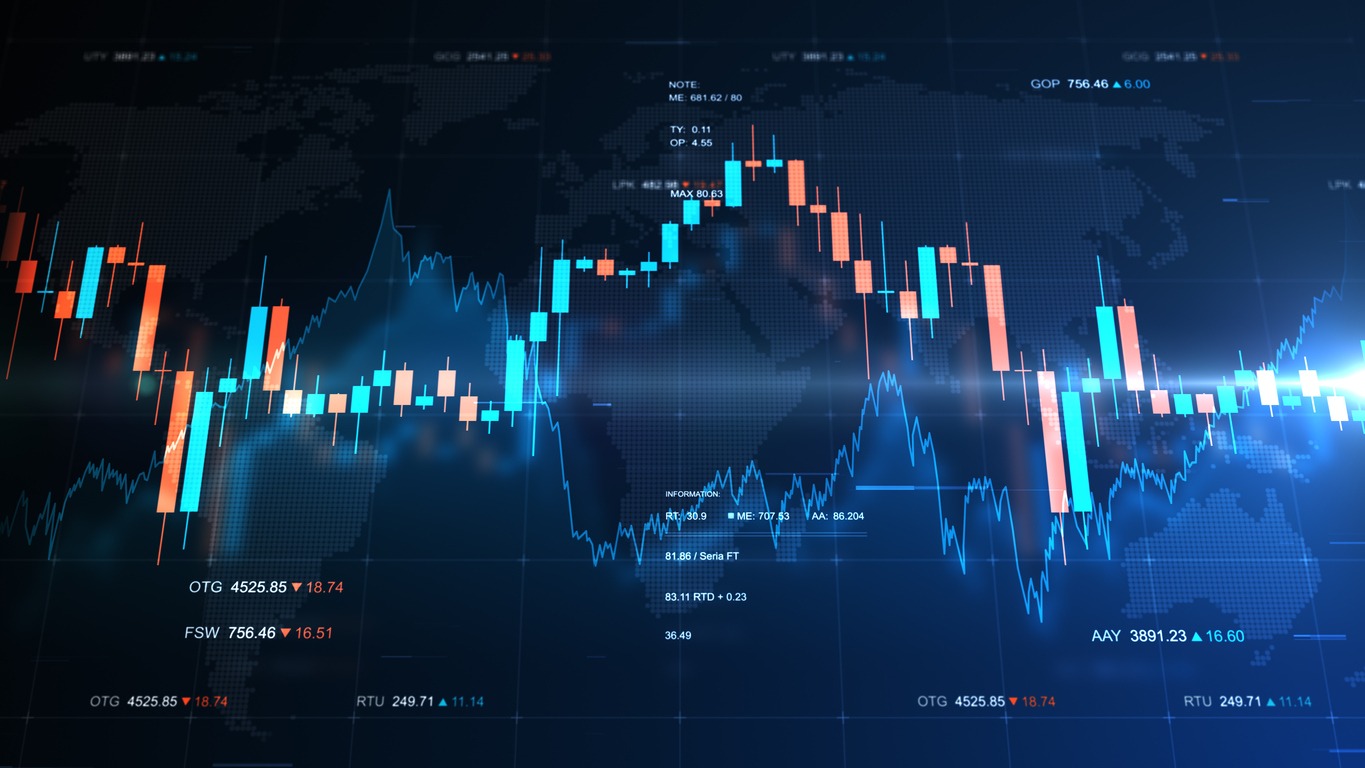The foreign exchange (forex) market is the largest and most liquid financial market in the world, with over $6.6 trillion traded daily. With the rise of technology and automation in trading, forex technical indicators have long been a staple tool used by traders and portfolio managers to identify trading opportunities and manage risk. However, in today’s fast-paced markets driven by algorithms, social media sentiment, and big data, the relevance of traditional technical indicators is being called into question.
This article will examine the most popular forex technical indicators used today, discuss their limitations in modern electronic markets, review advanced indicators and data sources now available, and provide actionable guidance on whether traditional technical indicators still have a place for effective portfolio management in 2025 and beyond.
Popular Forex Technical Indicators
Bollinger Bands
One of the most widely used technical indicators, Bollinger Bands, was developed in the 1980s by renowned technician John Bollinger. They consist of three lines – a simple moving average (SMA) in the middle, an upper band that is a standard deviation above the SMA, and a lower band equally below.
Bollinger Bands provide traders with a relative definition of high and low price levels for a financial instrument. When prices hit the upper or lower bands, it signals the asset may be overbought or oversold and likely to revert towards the mean SMA line. For this reason, Bollinger Bands are most commonly used to time entries and exits in range-bound markets.
Moving Average Crossovers
A moving average crossover is a combination of two differently length moving averages that cross. The signal shows that the momentum has changed, and the trend may reverse.
As an illustration, a short term SMA that crosses above a long-term SMA can be considered a golden cross, indicating the possible beginning of an upswing. The rationale is that any time that faster SMA crosses above the slower SMA, then the short term momentum has surpassed the long term trend, and therefore, an uptrend can be in the offing.
Moving average strategies are designed to enable traders to get into new trends early enough before a large price move. They also give possible exit signals when the averages finally cross the other way.
Stochastic Oscillator
A stochastic oscillator is a momentum indicator that examines the position of the most recent closing price concerning the high-low range within a fixed lookback period. The indicator varies between 0-100.
Any reading above 80 is in overbought territory and indicates that a market is approaching a possible turning point in the down direction. The readings below 20 are indicators of oversold and a possible bounce up. Stochastics are commonly used by traders to detect pullbacks in the current trends by seeking price divergence.
Such as in the case where the price is achieving a new high yet the stochastic oscillator is not able to reach new highs, it is an indication of fading momentum, which may be followed by a buying chance.
Fibonacci Retracements
Fibonacci retracements use horizontal lines at the key Fibonacci levels of 23.6%, 38.2%, 50%, 61.8% and 100% to identify potential areas of support and resistance. They act as potential reversal points for a move after a period of retracement.
These levels relate to the golden ratio that is found extensively in nature and are said to reflect the natural ebb and flow of markets. If used properly, traders can use Fibonacci retracements to forecast likely areas where an existing trend may resume after a period of profit taking or consolidation.
Limitations of Technical Indicators in Modern Markets
While the technical indicators described above remain staple tools for many traders today, they do have considerable limitations that need to be understood, particularly in fast-moving electronic markets:
- Lagging nature. Technical indicators are, by definition, lagging as they analyze historical price action and assume that what has happened in the past gives clues to the future. This lag causes problems in volatile markets.
- Subjectivity. Indicators require interpretation and are not definitive buy or sell signals. Two traders can have opposing views of the same indicator reading.
- Optimized for sideways markets. Many popular indicators like Bollinger Bands and stochastics work best for range trading situations and can underperform or give false signals in strong trending markets.
- Discretionary, not systematic. Technical analysis remains more art than science and relies heavily on individual interpretation. This makes it hard to systematize and automate.
- Data mining bias. Technical indicators can often be curve-fitted to past price activity, creating a bias that may not hold up moving forward as market dynamics shift over time.
The Rise of Sentiment Analysis, Alternative Data, and Machine Learning
With the limitations of traditional technical indicators becoming more apparent, traders today have been incorporating alternative data sets and new technologies to gain an edge with varying degrees of success. These include:
Sentiment Analysis
Sentiment analysis aims at measuring the overall mood of the market participants based on different sources of information such as news articles, blogs, social media feeds, and other internet content. The hypothesis is that the extremes of bullish or bearish attitude are reverse signatures that there is an impending turnaround that is about to be experienced.
Machine Learning Algorithms
New machine learning algorithms constantly search markets seeking to find repeated patterns or fingerprints that could indicate high probability trading situations. The advantage against fixed traditional indicators is that the algorithms are able to update to the dynamic market conditions instead of using a fixed formula.
Alternative Data Sets
Quantitative funds are now tapping a huge variety of new data sources, including search volumes on the internet, satellite photography, and credit card transactions, to enhance predictive accuracy. Nevertheless, although some alternative datasets are promising, the costs and concerns of causation versus correlation are an obstacle to broader use.
Are Technical Trading Indicators Still Relevant for Modern Markets?
So, with all the technological advancements and new data sources available today, is there still a place for traditional technical analysis, or should traders discard their Fibonacci retracements and Bollinger Bands?
Here are some key considerations on both sides of the debate:
The Case Against Traditional Technical Indicators
- Too slow for high-frequency trading (HFT) and automated strategies that now dominate short-term price action.
- Big data strategies utilizing machine learning and sentiment analysis may offer better predictive accuracy.
- Newer indicators based on volatility, momentum, and social media engagement can be more responsive in fast markets.
- Technical analysis is subjective and discretionary. Modern traders demand objective, rules-based strategies to systematize their edge.
The Case For Retaining Traditional Technical Indicators
The core principles of behavioral economics and crowd psychology that underpin technical analysis remain timeless - fear, greed, and herding will always move markets.
- Pure machine learning strategies can be susceptible to overfitting historical data and forward-looking limitations.
- Newer indicators lack decades of backtesting validation. Traditional indicators like moving averages and Fibonacci have stood the test of time across generations.
- Visual charts still offer valuable information on market psychology and structure that machines cannot always capture.
So while technical analysis appears far from dead, traders may need to adapt traditional indicators to today’s modern electronic markets rather than discard them completely.
Integrating Traditional Technical Indicators with Innovative Data Sets
Instead of being either/or, the wise course of action could be combining the very best of both worlds of traditional technical indicators and alternative data sets. Some of how this hybrid style may enable traders to modernize techniques and yet adhere to important principles of technical analysis are as follows:
Machine Learning for Entry Timing
Learn to use machine learning algorithms to examine intraday price action and optimize entry time of high probability chart patterns or indicator signals, instead of using fixed rules.
Sentiment Extremes for Exit Timing
Allow conventional exit rules using technical indicators to ride until overall sentiment in social media and news is still in agreement with the position. Extreme sentiment, then, can be used as a risk management trigger to liquidate positions.
Adaptive Moving Averages
Tweak moving average formulas to be more responsive to changing market volatility rather than a fixed length. For example, applying machine learning to optimize moving average lengths based on performance can provide a logical way to balance agility and prudence.
Pattern Recognition for Key Levels
Machine learning pattern recognition can help build a dynamic support and resistance model for intraday trading ranges. But revert to fixed technical points like Fibonacci retracements for positional trading ranges where fear/greed behavioral dynamics have more influence.
Cluster Analysis for Divergences
Backtest various technical momentum indicators against price to build a cluster analysis model of the highest probability divergence combinations by market type. This allows unemotional automation for an otherwise subjective process.
The Bottom Line
Technical indicators can never be pure in the sense that modern quant traders would like to see them. Nonetheless, when applied sparingly and in tandem with new technologies, they do not lose their value as a means of restoration to automated strategies and perspective on behavioural economics and its effects on price action. As with much of trading and portfolio management, the key to success in the long term in markets that are still being revolutionized by technology is probably to get the mix of human judgment and artificial intelligence right.














